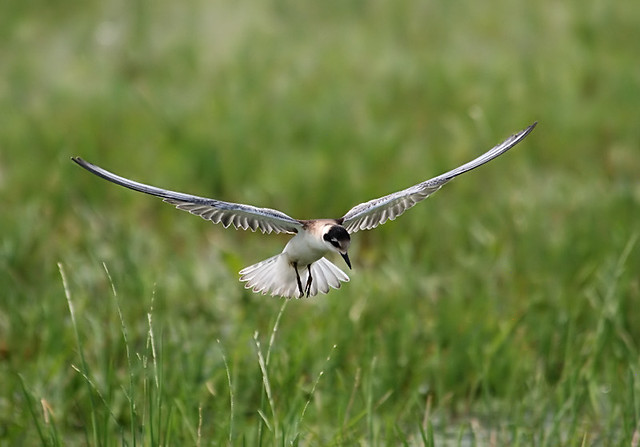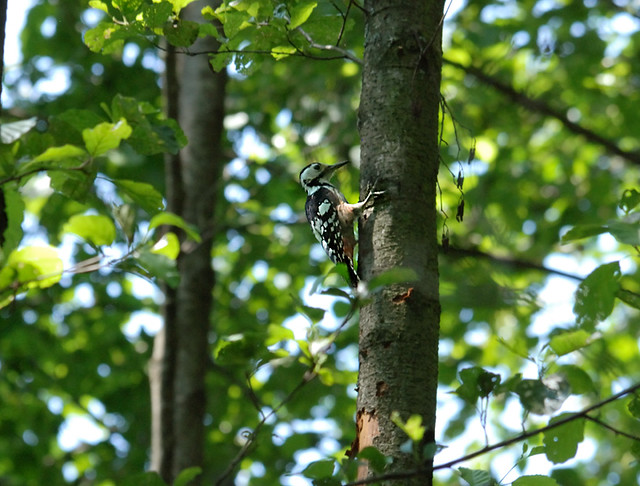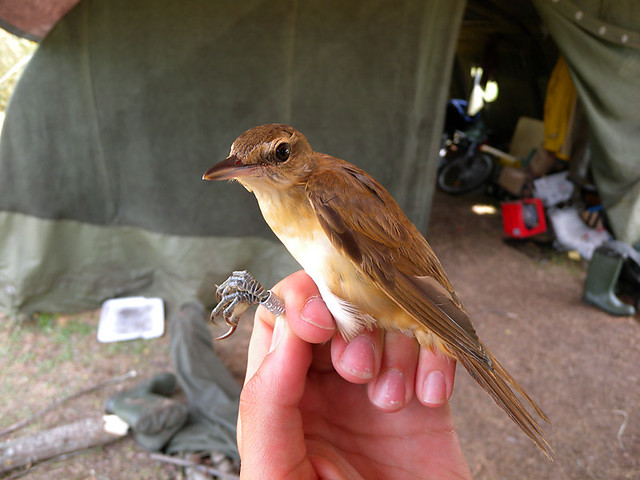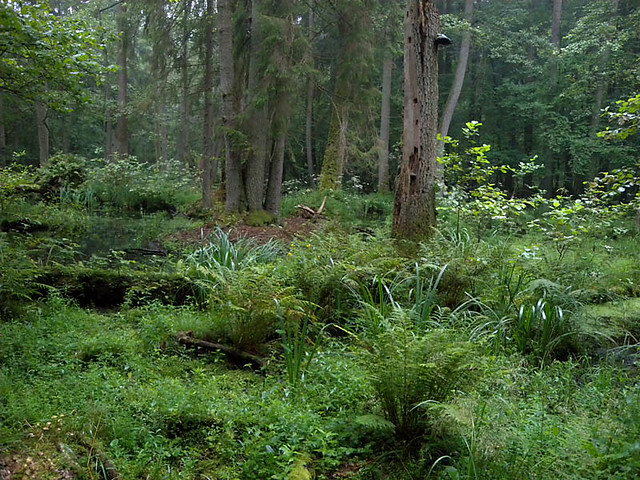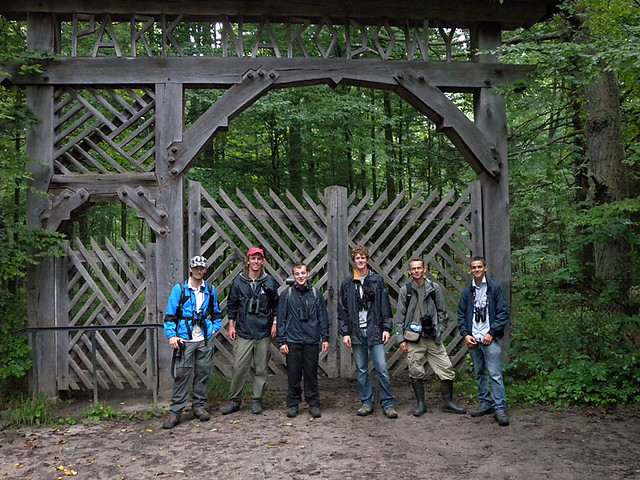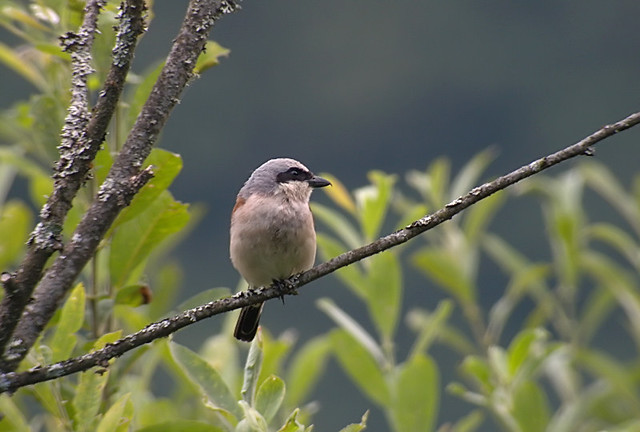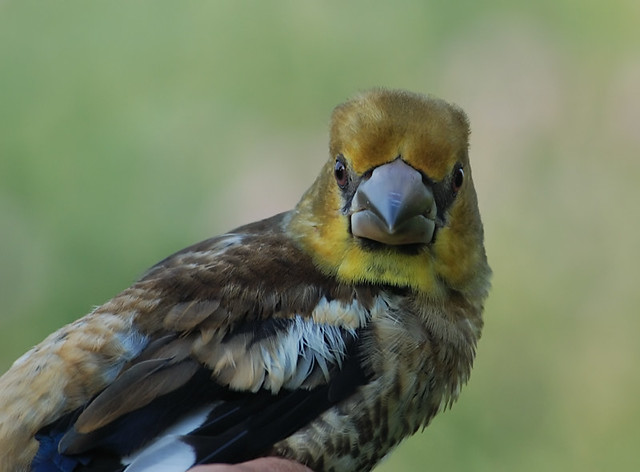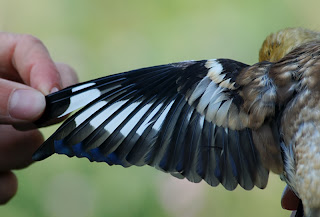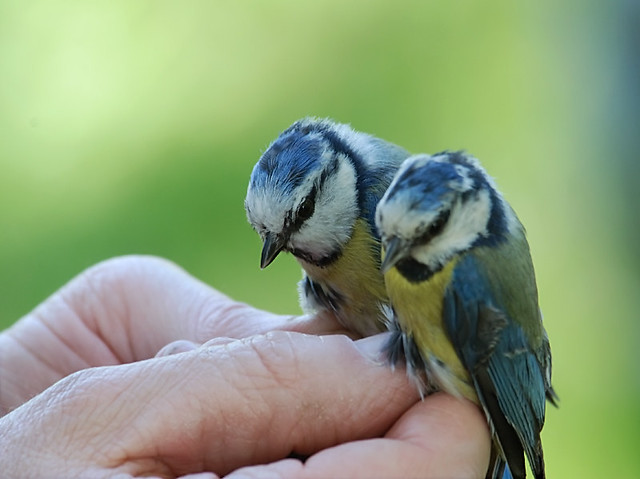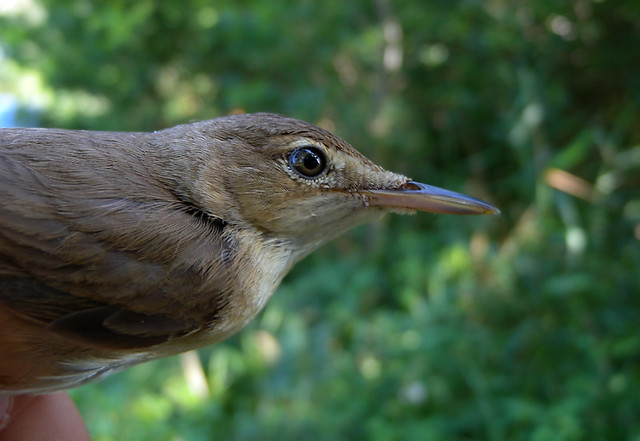In spring a lot of rain came down in Poland. Still in summer we could see rivers full of water and flooded meadows.We arrived on sunday at 16.30 in Brzotowo. The weather wasn't good. There was a thunderstorm above the biebrza, which didn't move at all.We were hungry and we decided to drive to Wizna and have a good meal in the Youdans Bar. Sitting outside (the temperature was pleasent) we watched the river and the slowly disappaearing thunderstorm
At 19.30 we went back to our basic campside. It was dry and we build up our tent. The water level of the B was high and reached the campsite. a lot of white-winged terns were fouraging above the water in a close distance. A beautiful spectacle. Also a lot of calling hawfinches.
On Monday 19 July morning we awoke at 4.30 by the calls of the hunting terns along the riverside. In the red coloured light of the rising sun it was an unforgettable moment.
At 7.30 we drove in the direction of Michy. At Loje we heard a singing ortolan bunting while driving. We stopped the car and found bird singing in a high pine tree. At Michy the water level was very high. A lot of white-winged tern were flying around .
A black stork was wheeling upstairs. We saw two species of harriers: a lot of marsh harriers and two male montagu's harriers
Other species here: kingfisher, great grey shrike, little tern.
In the afternoon we explored the surroundings of Wolka (road between Goniadz and Osowiec). Against the backlight an eagle with broad wings like a small White-tailed eagle was approaching us. The bird had a GPS tracker on his back . We identified it as a lesser spotted eagle.
In the evening we did some birding near the campsite: 1 male and two female Rosefinches. At this time of year they are difficult to find. The birds were flying around between small bushes near the river.
A crane flew over
From our watchtower at the campside we had a beautiful view over the flooded Biebrza. Cranes were passing by, 1 hunting white-tailed eagle and two resting.
At 21.30 - we just lay down in our tent to get some sleep after a intensive day - we heard a black-crowned night heron flying over.
Tuesday 20 July : first we enjoyed again the hunting terns just in front of us. A lot of them are juvenile birds.
 |
| juvenile white-winged tern |
We went back to the spot of the Rosefinches. Nothing to see or hear. After a while we discovered some Rosefinches (females and juveniles) in the willow bushes. The birds are dificult to see and very restless. We could observe one juvenile very well. In comparison with female birds the young birds have a more grennish plumage and a more yellow bill. At 10.00 back on the campside. The terns were disappaeared. They hunt only in the morning and in the evening.
We packed up our tent and left to Wizna for lunch. During our lunch we had 6 gliding black storks in front of us.
We crossed the bridge and turmed to the right and followed some kilometres the river to the south:
at least 150 great egrets, a lot of ruffs and one hunting white-tailed eagle.
In the afternoon arrival at the campside of Buddy, just in the middle of nowhere. Here we we got our lesser spotted eagle moment"" : two birds, probably a pair were gliding above us. The male was calling and displaying with the typical rolls high in the sky.
In the evening we went to the sedge marshes south of Gugny. The sun was still shining and were attacked by .horse flies on the sunny spots and in the shadow by mosquitoes. These terrible combination of insects was there every day, especially in the alder carr woods and the marshes.
At 19.30 had already the first singing aquatic warblers. Not that much as in late spring, but still enough to enjoy the song together with the beautifull landscape. At 20.30 the song activity was decreasing! Most of the birds remain hidden between the sedges.
Next morning we explored the area near to the campsite:
a male Grey-headed woodpecker, 2 hoopoes, hawfinches,
lesser spotted eagle hunting in the meadow in front of the campsite, later resting in a tree ,
4 cranes landing at the edge of the meadow.
Then a relaxed morning at the campsite ; we were just discussing what to do the afternoon as Tim de Boer phoned us: the GPS-tracked eagle is a greater spotted eagle!
We parked the car at the same place we saw the eagle on Monday (Wolka). Out the corner of my eyes a saw something dark landing in the meadow. Some minutes later a big dark raptor is flying up. The bird landed in a poplar. A dark eagle with a yellow bill, it must be the greater spotted eagle. After a minute the bird flied up an started wheeling above us. We had a good view, and the light was okay!
 |
| greater spotted eagle |
Meanwhile a singing corncrake in the meadows; it is 15.00 with a temperature of 32 C! We were also rather surprised.
A black stork was passing by in this typical fly position: the neck hanging down and stretching forward.
In the evening we walked to the wooden platform, from which you overlook the lekking ground of great snipes. But it also a good site to see and hear the aquatic warblers. The weather was still very hot and at our way to the platform we were attacked by mosquitoes and horse flies.
The platform was a good place to stay: some wind and no insects.3 aquatic warblers were singing. It seems that they are singing in a close distance, till we discover one of the singing birds. He is singing in a greater distance than we espected.. In the scope with 40x we can just see the stripes on his head and the typical pattern on the back. You can hear the song in a great distance.
Thursday 22 July: the wood behind Wolka must be exellent for White-backed woodpeckers. We started our tour at 9.00, but woodpecker-watching was very difficult because of the mosquitoes and the horse flies. The temperature was already 28 C ! We protected us with clothes and Deet. But inspite of the Deet my left hand was so swollen that you couldn't see the knuckles anymore. We saw a Lesser Spotted Woodpecker and a Middle Spotted Woodpecker.At 10 we stopped birdwatching and drove to Goniadz for a swimm in the river Biebrza. Then we turned back to the woodpecker forest. At midday the insects were less active and we were more succesfull:
Back on the campsite a spend some time observing a family of red-backed shrikes
Friday 23 July: we left to the Biealowieza Forest. Target species for us : hazel grousse and Tree-toed Woodpecker and maybe the Great Snipe. In sumnmer it's difficult to see woodpeckers.We didn't see a lot of them, but we managed to see all species of the Biebrza. There was still one left: the Tree-toed Woodpecker. The bird lives in spruce forests, especially dead spruce forests. So you have to find these dead spruce forests. The estinmate population is around 150 pairs in the whole area, so it's not a common bird. We find one south of Bialowieza. And were very lucky to have a pair of them just within a short distance low near the ground on a spruce trunk.
At the famous woodpecker spot near Teramiska we saw only a Greater spotted Woodpecker and a beautiful calling Lesser Spotted Eagle resting in a tree
We found also trees with the typical feeding signs of the Tree-toed Woodpeckers in the bark
One day we visited the lake Siemianowka. The south-east side is the most interesting part. First we visited a ringing camp. The most trapped birds were Red-backed Shrikes, Great Reed Warblers and a family of Penduline Tits.
But the highlight was for us a meadow with a lot of sedge vegetation where we found 4 great snipes! The field was situated between meadows with cattle. When they fly up you see the differences between a Common Snipe very well: the obvious white feathers on both sides of the tail, the straight and strong flight (like a Woodcock) and the thicker belly.
On Tuesday 27 July we visted the strict reserve (only possible with a quide) very early in the morning : from 5.00 till 7. The strict reserve is not the place to see a lot of birds, although we saw a beautiful male White-backed Woodpecker and a juvenile Red-breasted Flycatcher.5 years ago we visited already the strict reserve, unfortunately with heavy rain. It was a special atmosphere, but we want to see the primeval forest on drier conditions.
It's a wet forest, in fact a kind of Amazon with moderate temperatures. But such wet conditions mean a lot of rain.The quide told us that there are 3 wolf packs in the Biolowieza National Park: one in the North, one in the Soutrh and one in the West.
After the tour a foto of us in front of the main entrance of the strict reserve:
from left to right: Daniel, Tjeerd, Jaap, Willem, Tammo and Fabian
After the quided tour We explored the forests of the Natioanl Park outside the strict reserve by bike searching for bisons. We found only frehs footprints and droppings. In the last years it's difficult to see the bisons in summer. There are become more shy as 30 of them are shot every year, to keep the numbers on a stabile level.
So far we didn't see a many birds. We cycled on the long straight tracks and suddenly a flock of 5 Hazel Grouses flew up. They were feeding on the blueberries alaong the track. One male flew in a nearby tree and was sitting for some seconds on a branche.After that we could observe a female slowly disappearing in the wood.
In Kosi Most we saw a small dog-like animal with a dark mask. It must be a raccoon dog.
On Wednesday 28 July we tried to find a special and rare bird for Poland. It's a bird we have seen many times in Spain. A pair of Rollers breeds since serveral years in the very small village of Mikulicze, 50 km southwest of Hajnowka. The village has a wooden church and one klep.
The Roller was sitting on electricity wires.
On Friday 30 July we left Eastern Poland and headed West. We made a stop at a camp site near Poznan.
It was a succesfully birding tour. We have seen all target species, all woodpecker species, exept. . . . the wryneck. There was a bird feeding on the ground near the camping entrance almost every day. Our four dutch friends saw the bird very regulary. We didn't manage to see the bird.
To me the typical bird of Poland is the red-backed shrike.


